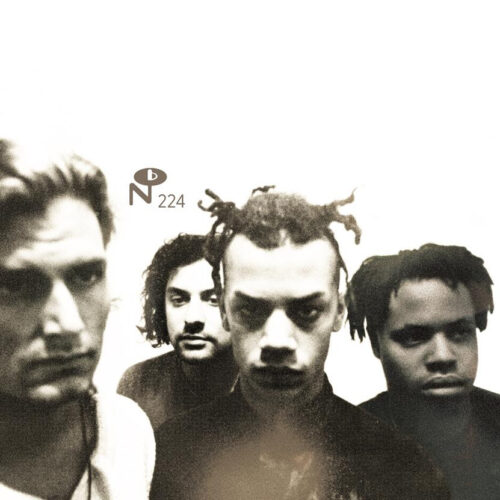
If you can deactivate the now-calcified preconceptions of ’90s nostalgia and push beyond the ear-perking noisy hooks that register at first as standard shoegaze moves, and get closer to the weird specifics and idiosyncratic details that live in all of their songs, it becomes easier to understand how Majesty Crush spent its existence on the perimeters of multiple scenes but belonged to none. Even thirty-some years later, there’s still no easy way to outline their tangled and confounding trajectory, or to make sense of how they teetered perpetually on the verge of a breakthrough that seemed promised but never arrived. This wasn’t a band that never caught a break, nor were they a bunch of stage-frightened introverts who would’ve made it if they’d just been a little more willing to play the game.
Majesty Crush was popular in its own right, enjoying local commercial alt-radio play and opening big shows for national bands right out of the gate. The band was signed to a subsidiary of a major label not terrifically long after starting out as one of many dreamy-eyed groups of the era that was self-releasing 7″s with smudged art on handmade covers. With close listening, the various shades of rawness that emerge in the lyrics, the sound, and the band’s ever-simmering overall energy begin to offer clues as to why the world wasn’t quite ready in the 90’s.
Not just a band from Detroit, Majesty Crush was distinctively a product of Detroit—one that mirrored their city’s complexity, singularity and cross-culture. The band’s frontman/vocalist David Stroughter, guitarist Mike Segal, bassist Hobey Echlin and drummer Odell Nails created a form of dream pop that was charged and uncompromising at a time when many were succeeding on an international level for merely recycling sounds originated by bigger bands. Instead of a Midwestern assimilation of a shoegaze movement evolving in real time all around them, Majesty Crush was a far stranger, impossibly individualized blur of personalities, experiences, and perspectives informed by the independent music badlands of the early ’90s, which played out in the unlit, unregulated corners of the Motor City.
Inspired in part by the emptiness of Detroit that surrounded them as a new decade began, Majesty Crush used their music to build a dreamscape of their own design from what felt at times like pervasive nothingness. Segal’s three-string guitar lines emanating wistful, spare melodies and drones, Nails’ dense, melodic drum beats and Echlin’s Joy Division-esque parts hammered out on a pawn shop bass formed a foundation for vocalist Stroughter’s psycho-sexual fantasy depictions that seethed and purred as if the world was ending in every breath. These were the primal elements that began Majesty Crush and set the tone of maximalist minimalism that would define their brief but prolific career.
By early 1991, Majesty Crush was a live band capable of a deep, noisy beauty fronted by Stroughter’s confrontational charisma. The band seemed to be everywhere at once, appearing as jagged pop eccentrics. By the spring of 1992, Majesty Crush was at a creative peak. They’d released a collection of seven inches then their Fan EP dropped— its songs were varied, different, even intimate. The EP broke new territory, stylistically and even, in the title track’s case, as “No. 1 Fan” found success at local alternative radio.







